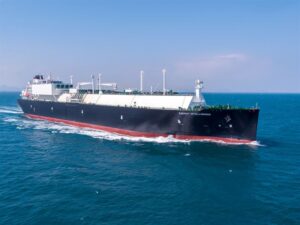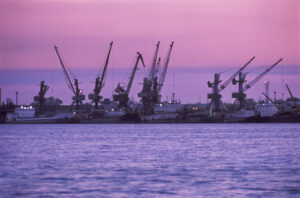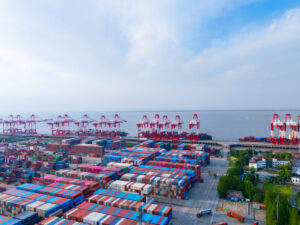Rail mounted gantry (RMG) speeds can reach more than 240 metres per minute, with some of the largest machines produced by engineering firm Kuenz supporting a girder of over 140 metres in length.
This allows them to stack one over five containers and takes their weight to over 700 tonnes.
However, becoming a giant machine with more surface area is a challenge when it comes to gusts, as RMGs need to battle wind speeds of up to 28 metres per second.
The engineers at Kuenz have conquered the wind surface challenge by drawing upon lessons learned in the hydropower industry.
Their design impressed APM Terminals so much that Kuenz will be installing the new aerodynamic RMGs at the Tangier MED 2 project.
With the design phase of the cranes completed, six cranes are already on site and erected.
The entire project will be finished by the end of 2018.
In his latest technical paper with port technology, ‘Aerodynamic Girders for RMGs’, David Moosbrugger, Managing Director, Kuenz, said: “Water flows over curved plates more smoothly than over sharp edges.
“The same design principles are also used in the aircraft industry to smooth the edges of airplane designs, for which reason wings on an airplane are not rectangular, but are rounded and aerodynamic in shape.
“Engineers then experimented with rounded beams, and it did not take long until they found a cross between an I-beam and rolled plates to use in the design for a new aerodynamic main girder.
“The rolled plates are essential, and form the basis of the design.
“It is not only an aerodynamic shape which helps with reducing the wind loads; it is also the stability provided by a rolled plate versus a regular flatplate.”
With the new design, Kuenz was able to improve the characteristics of the stacking cranes, reducing wind surface by approximately 50%.
This allowed the engineers to choose optimum sized motors and frequency converters.
The design also lowers power consumption by 20% compared to a conventional crane and reduces the weight of the crane by 15%.
This results in less wheel wear and less loads on the rail and infrastructure, which results in less maintenance cost of the overall system.










